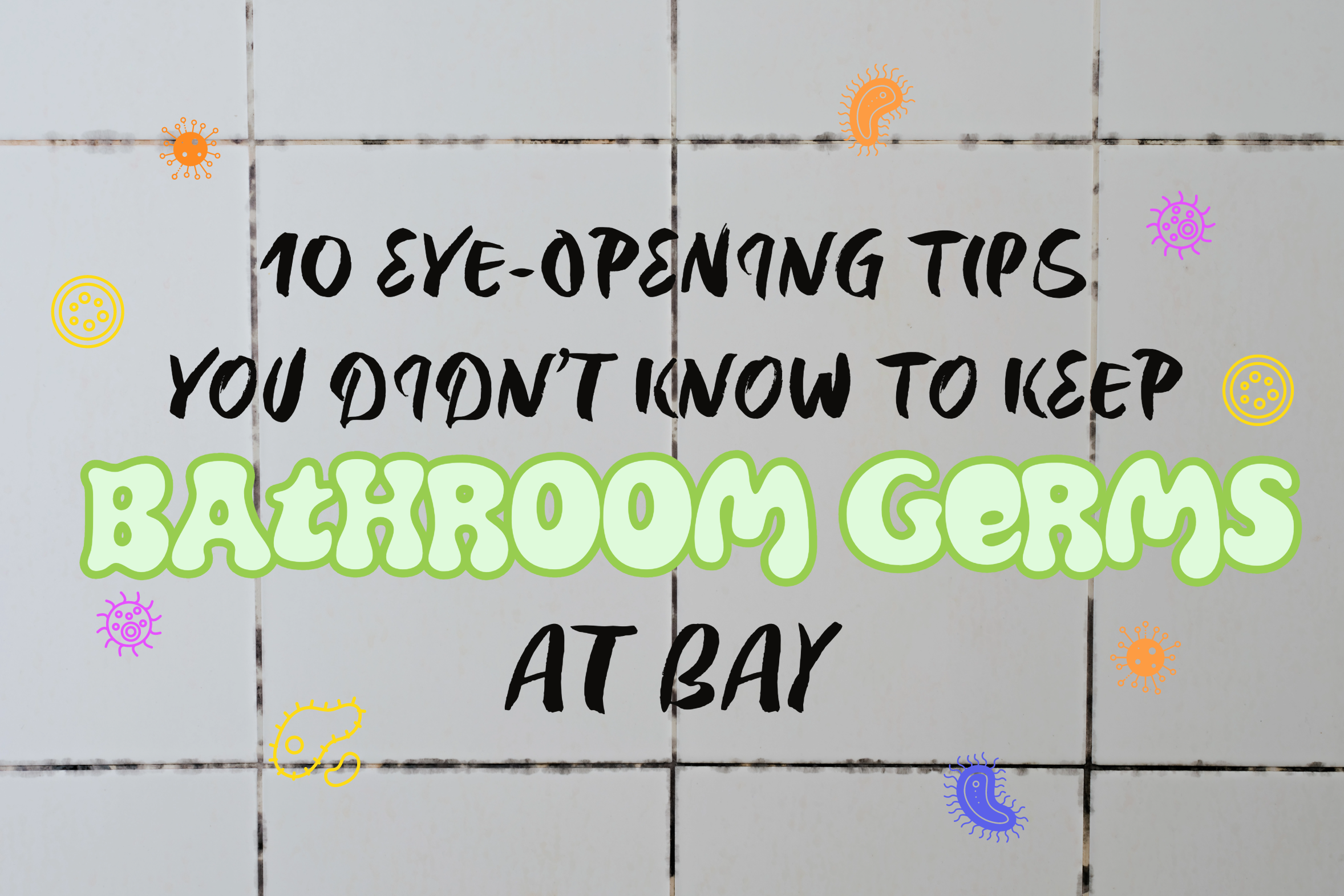Bathrooms are heavily used in homes, which unfortunately means they can get really dirty due to their purpose. Since bacteria and germs thrive in moist environments, bathrooms become the perfect breeding ground for them. That’s why it’s crucial to regularly clean and disinfect your bathroom. Today, New Albany Plumbing & Drain wants to help you improve your bathroom hygiene with ten essential tips to keep unwanted bathroom microbes away.
WHAT ARE THE Common Types of Bacteria Found in Bathrooms?
Bathrooms contain various types of bacteria, some posing greater health risks than others. Common types found in these spaces include:
- E. coli
- Staphylococcus
- Salmonella
- Influenza virus
- Norovirus
Knowing these types of bacteria helps you understand how to clean effectively and keep your bathroom clean and hygienic.
WHAT ARE the Bacterial Hotspots in Bathrooms?
To effectively combat germs in your bathroom, it’s crucial to pinpoint the areas most susceptible to bacterial presence. Take note of these germ hotspots:
- The toilet seat and handle
- Sink faucet and handles
- Shower curtains and bath mats
- Towels and washcloths
- Countertops and surfaces, particularly around sinks
Knowing where germs thrive helps you focus your cleaning efforts strategically, preventing the spread of harmful bacteria.
10 EYE-OPENING TIPS YOU DIDN’T KNOW TO KEEP BATHROOM GERMS AT BAY:
HOW LONG DO YOU WASH YOUR HANDS?
Regular handwashing is the first line of defense against harmful bacteria and germs. Take at least 20 seconds to thoroughly scrub your hands with soap and warm water. This simple yet powerful act significantly reduces the risk of infections and prevents the spread of illnesses. Make handwashing an indispensable habit for everyone.
DO YOU SCHEDULE YOUR BATHROOM CLEANINGS?
Designating a specific day each week for thorough bathroom cleaning is a smart way to keep your space spotless. This routine ensures that every corner is covered and helps eliminate bacteria, mold, and other potential hazards. By maintaining a clean and hygienic environment, you’re creating a healthier space for you and your family. Furthermore, another helpful hack is to keep antibacterial wipes on hand in your bathrooms. It will make for quick cleaning sessions, which will assist in controlling the spread of germs between your regular cleaning sessions.
ARE YOUR TOOTHBRUSHES COVERED?
To maintain good oral hygiene, it’s important to protect your toothbrush from airborne bacteria. Simply store your toothbrush with a cover to prevent contaminants from landing on the bristles. This simple practice can enhance your daily oral care routine and reduce the risk of bacterial transfer.
DO YOU FLUSH THE TOILET WITH THE LID CLOSED?
Closing the toilet lid before flushing might seem like a small gesture, but it has a big impact on reducing the spread of bacteria. This simple step contains airborne particles, preventing them from dispersing throughout the bathroom. It’s an easy habit that contributes significantly to maintaining a clean and bacteria-free environment.
DO YOU HAVE TOUCHLESS FAUCETS?
Improve your bathroom with hands-free fixtures such as motion-sensor faucets to reduce the risk of cross-contamination. By eliminating the need to touch surfaces, these fixtures are essential in preventing the spread of germs. Invest in this modern technology to enhance convenience and hygiene in your bathroom.
DO YOU DISINFECT YOUR TOILET BRUSHES?
Toilet brushes can collect bacteria, so it’s important to clean them after each use. Do this by by pouring hot water and bleach directly over the bristles (and straight into the toilet bowl so germs don’t spread). Then, to air dry it, prop the handle of the toilet brush in between the toilet bowl and toilet seat lid with the brush toward the bowl. It may seem like an extra unnecessary step, but it definitely aids in reducing bacteria in your bathroom. However, if you choose to use a disposable brush, remember to throw away the used end after every cleaning.
HOW OFTEN DO YOU CHANGE OR WASH YOUR SHOWER CURTAINS AND LINERS?
What about your shower curtains and shower liners? Regularly changing shower curtains is important to prevent bacteria and mold buildup. Opt for washable fabric liners or replace your shower curtain regularly for a cleaner and safer bathroom.
HAVE YOU THOUGH ABOUT GETTING A BIDET?
Upgrade your bathroom with a bidet for a cleaner alternative to traditional toilet paper. Bidets reduce the risk of spreading germs through hand contact and provide a comfortable and effective cleansing experience. They are reasonably priced and easy to install, making them a smart investment in hygiene and comfort.
DO YOU LET YOUR BATHROOMS VENTILATE?
Proper ventilation is vital for preventing bacterial growth. After using the bathroom, make sure to ventilate adequately to reduce moisture levels. This simple step not only keeps the air fresh but also helps maintain a hygienic space where bacteria struggle to thrive.
HOW OFTEN DO YOU GET YOUR DRAIN CLEANED?
Did you know it is recommended to get your drains professionally cleaned every 1-2 years? Doing so helps prevent bacterial and mold buildup in your plumbing system. Keeping your drains clean contributes to a healthy bathroom and home. It ensures proper drainage, reduces foul odors, and promotes a hygienic environment for you and your family.
By following these tips, you can have a cleaner bathroom with fewer germs. Consistently implementing these tips will significantly reduce the spread of bacteria and improve overall hygiene in your home. Call New Albany Plumbing & Drain today at (614) 245-3319, or schedule an appointment online now by clicking here!




